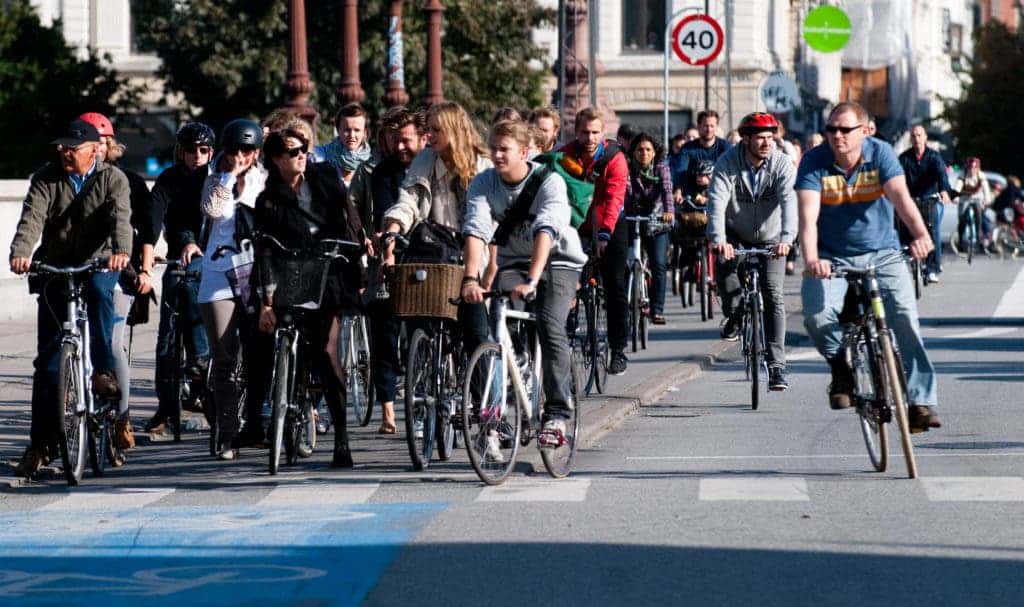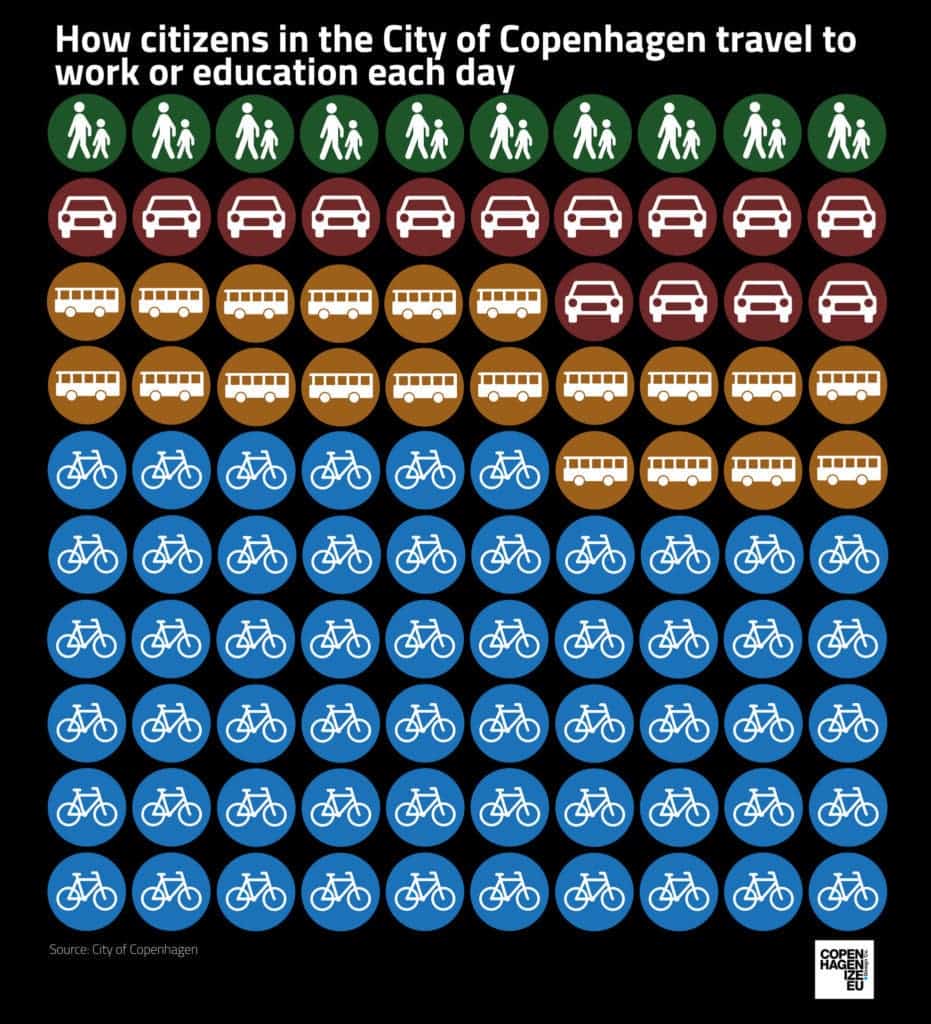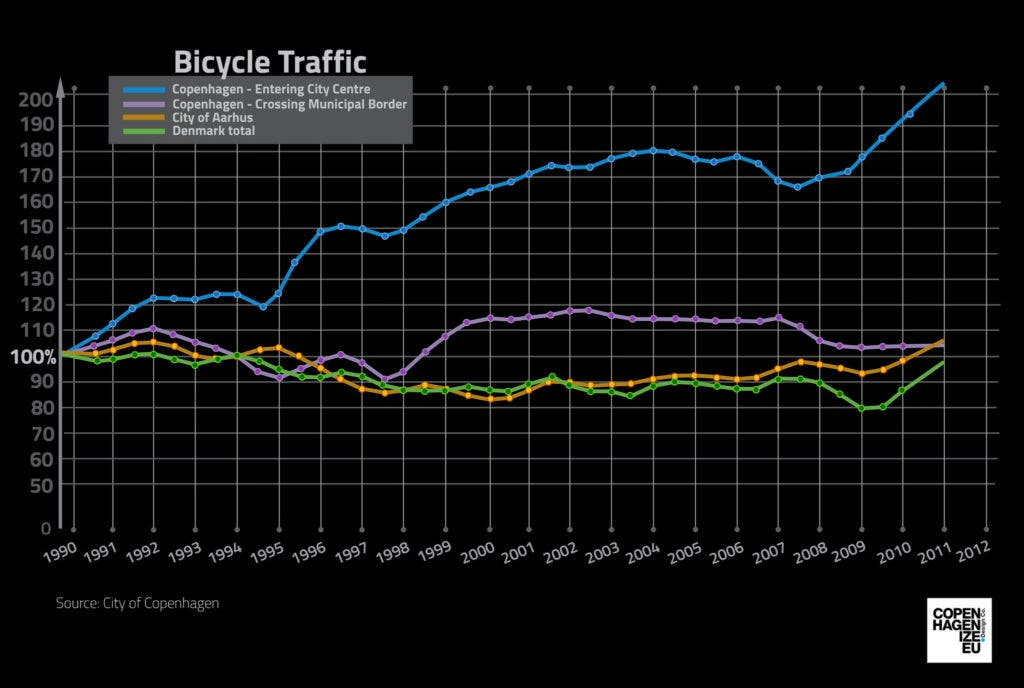
If you thought the weather in England was depressing, wait until you reach Denmark. The air is cold and damp, and it’s not uncommon to see wind gushes strong enough to pull your jaw out. Despite the bad weather, you won’t see the Danes complain. Perhaps some Nordic genes help these modern vikings peddle unphased by the cold and wind even in shorts or skirts across Copenhagen’s busy streets. In fact, Copenhageners love bikes so much it’s officially become the mode of transit in the Danish capital.
According to Copenhaganize, the latest City of Copenhagen stats suggest bikes entering the city centre have for the first time outnumbered vehicles. The city has more than twenty sensors installed that count traffic.
Since last year, 35,080 more bikes were counted bringing the total to 265,700 bikes on a daily basis.

Danes have all the reasons not to use bikes. Most are wealthy and the weather sucks but even so, Copenhageners prefer to bike. If they don’t bike to get to school, work or university, they’d rather use public transit. Personal vehicles come in a close third or tied with public transit. Only 25 percent of Copenhageners own a car.

It should be duly noted that the local government and town hall have a word to say, too. It’s the city’s policy that “bicycle traffic and public transport usage must never fall below 30% and car traffic must never rise ABOVE 30%,” Copenhaganize informs. Facilities that prioritize bike traffic like bridges and overpasses worth €134 million also helped sway many Copenhageners to cycle instead of driving. They even have the famous Cykelslangen (“Cycle Snake”), an elevated bike-only roadway above the harbor front. As a result, more than twice as many people use bikes in the city than 25 years ago.
We all have a thing or two to learn from Copenhagen, for sure.







